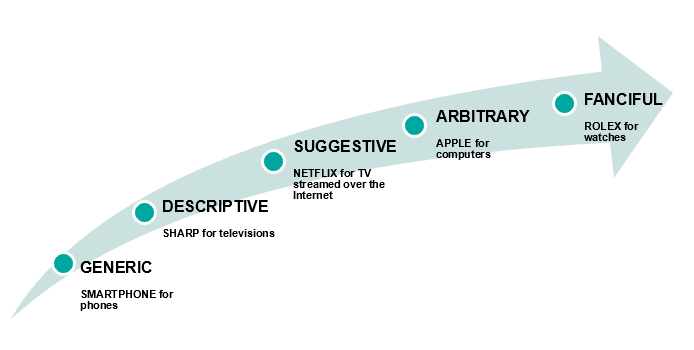Can I DIY my own trade mark application?
Filing a trade mark application might seem straightforward, but there are several traps that can catch out those who go it alone. It’s a bit like painting your own house – sure, you could do it yourself, but a professional probably has a few tricks up their sleeve to save time, and ultimately give you a better finish while your own time might be better spent elsewhere. A misstep in your application can lead to costly delays, refusals, infringement claims, or ultimately having to change your own brand.
Here are eight common pitfalls to watch out for:
1. Choosing the wrong trade mark
Not all names or logos can be registered as trade marks. If your trade mark is too descriptive (e.g., “smartphone” for a phone) or otherwise lacks distinctiveness, your application may be rejected.
Think of distinctiveness like a spectrum:

2. Inadequate clearance searches
Before you commit to a brand you should ideally be doing some checks to make sure no one else is using it or owns rights in it. A quick online check is not enough – there may be similar registered marks that could block your application or lead to infringement issues down the track, so you should be checking the registers for identical and similar marks that cover the same or similar goods and services too.
3. Not getting ownership details right
Trade mark applications need to be filed in the name of the person or entity that owns all the rights in the mark – usually that’s the person or entity that uses the mark or licenses use of the mark to others. Filing in the name of the wrong person or entity (e.g. filing in your personal name when it’s your company that uses the mark) could result in your registration being invalid (and challengeable by third parties on this basis).
4. Filing for the wrong mark
Your rights in a registration will be limited to the form of the mark you cover. Word mark registrations generally give you rights in that word and similar words in any form, whereas logo registrations limit you to the form of the logo as a whole (including its stylisation). It pays to think carefully about the marks you use and how they should be registered.
5. Incorrect classification of goods and services
Trade mark applications require you to specify the goods and services the mark will cover, and these are broken up into 45 different categories (called ‘classes’). Choosing the wrong class, being too vague, or putting the wrong thing in the wrong class can lead to refusals by the Intellectual Property Office, or worse, leave your mark unprotected where you need it.
5. Not registering in the right countries
Trade mark rights are territorial, meaning protection in one country doesn’t automatically extend to others. This means you need to secure your trade marks in each country you plan to use the mark in and, ideally, you should have a strategy for global protection from the outset.
6. Not understanding the examination process
If you receive an objection from an Intellectual Property Office, knowing how to respond effectively is crucial. Many self-filers abandon applications at this stage because they’re uncertain about how to proceed.
7. Overlooking maintenance and renewal requirements
A trade mark registration isn’t a ‘set and forget’ asset. Failure to use the mark as registered, or missing renewal deadlines, can result in a loss of rights.
While DIY trade mark applications might seem like a cost-saving measure, the risks of rejection, opposition, or weak protection can far outweigh the initial savings (and lead to even more costs blowing out along the line). Consulting an experienced trade mark professional can help you navigate the process smoothly and ensure your brand is properly protected.
If you have any questions, please contact a member of our Intellectual Property team.
Special thanks to Partner Katy Rostovich (née Stove) for preparing this article.
Disclaimer: The content of this article is general in nature and not intended as a substitute for specific professional advice on any matter and should not be relied upon for that purpose.






